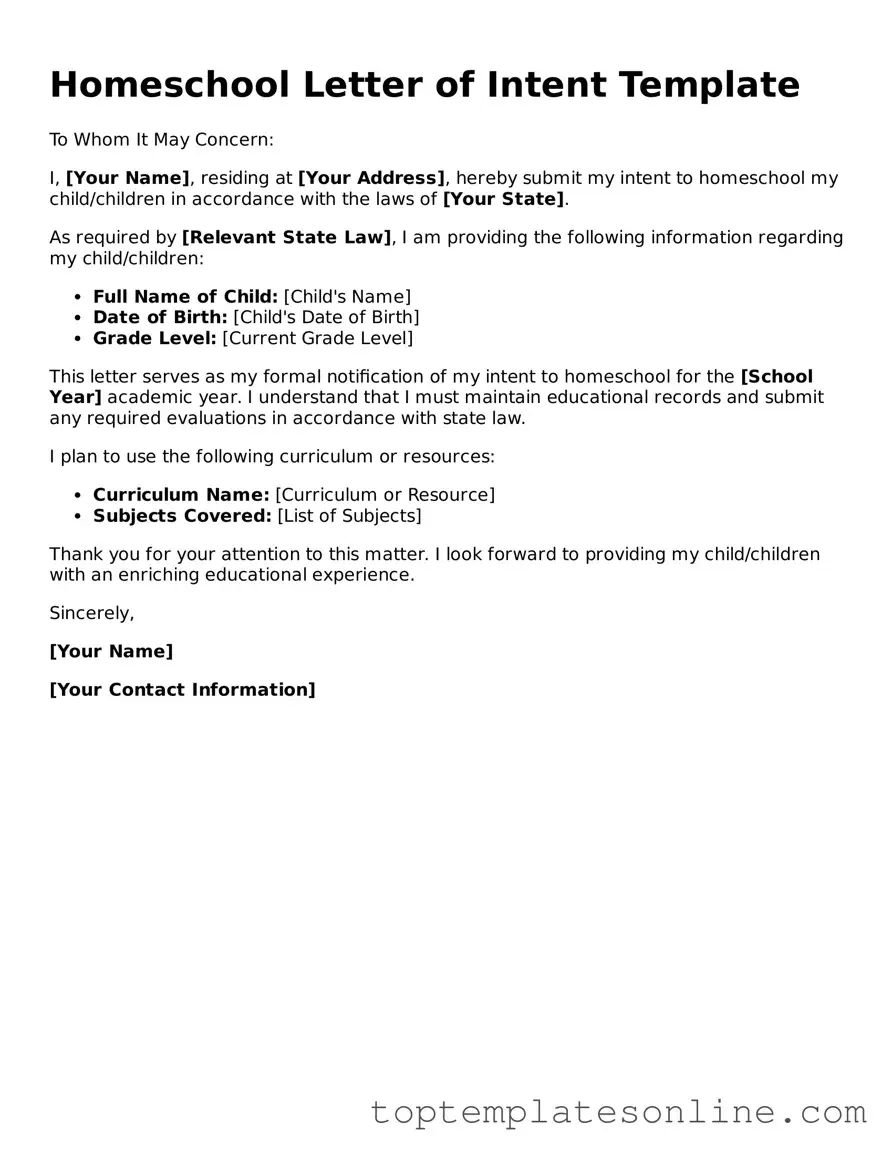Attorney-Approved Homeschool Letter of Intent Form
The Homeschool Letter of Intent is a formal document submitted to local education authorities to notify them of a family's decision to educate their children at home. This letter serves as an important step in establishing a homeschooling program, ensuring compliance with state regulations. Understanding how to properly complete this form is essential for parents embarking on this educational journey.
Customize Homeschool Letter of Intent Here
